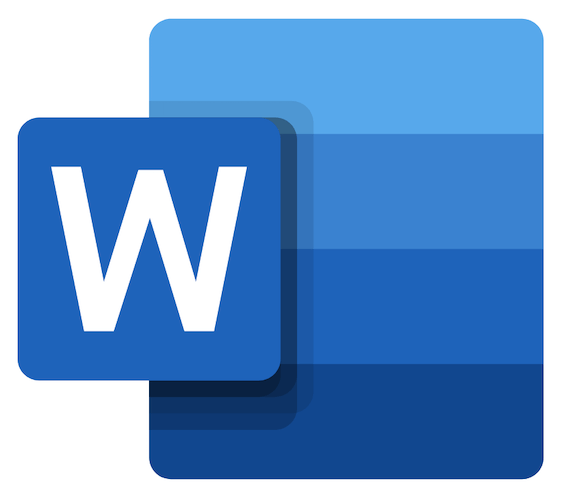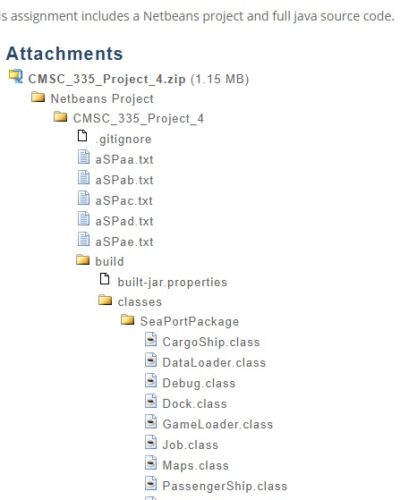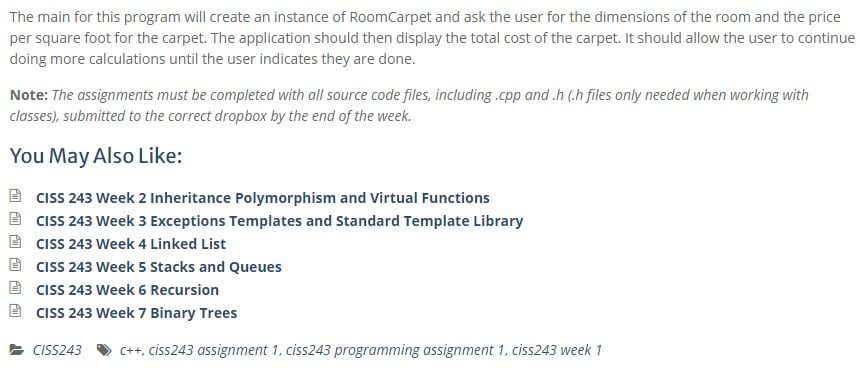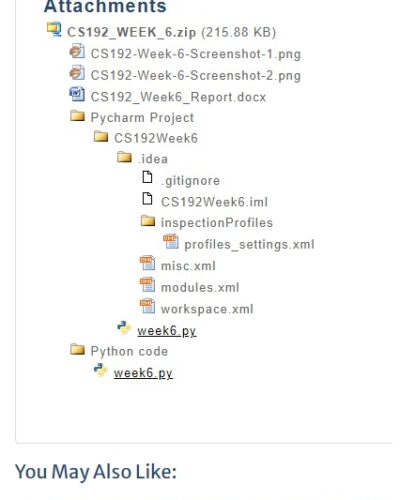ACCT 221 ACCT221 ACCT/221 ENTIRE COURSE HELP – UNIVERSITY OF MARYLAND, UNIVERSITY COLLEGE
$149.99$275.00
ACCT 221 ACCT221 ACCT/221 ENTIRE COURSE HELP – UNIVERSITY OF MARYLAND, UNIVERSITY COLLEGE
ACCT 221 HomeWork Problem Solutions
ACCT 221 HomeWork Solutions
ACCT 221 Problems Solutions
ACCT 221 Week 8 Comprehensive Problem, Chapters 19-26
ACCT 221 Week 8 HomeWork
Description
ACCT 221 ACCT221 ACCT/221 ENTIRE COURSE HELP – UNIVERSITY OF MARYLAND, UNIVERSITY COLLEGE
ACCT 221 HomeWork Problem Solutions
ACCT 221 HomeWork Solutions
ACCT 221 Problems Solutions
ACCT 221 Week 8 Comprehensive Problem, Chapters 19-26
ACCT 221 Week 8 HomeWork
ACCT 221 ACCT221 ACCT/221 ENTIRE COURSE HELP – UNIVERSITY OF MARYLAND, UNIVERSITY COLLEGE
ACCT 221 HomeWork Problem Solutions
Question 3
If a company increases its fixed costs for Product Z, then the contribution margin per unit will
Remain the same
Decrease
Increase
Incomplete information
Question 4
When production levels are expected to increase within a relevant range, and a flexible budget is used, what effect would be anticipated with respect to each of the following costs?
Fixed costs per unit Variable costs per unit
No change No change
Decrease No change
No change Decrease
Decrease Decrease
Question 5
Wang Company provides the following information for their first year of operation:
Sales | 5,000 units @ $10 |
Selling and administrative costs: | |
Fixed | $1,000 |
Variable | $1 per unit |
Variable production costs per unit: | |
Direct materials | $2 |
Direct labor | $2 |
Variable overhead | $1 |
Fixed factory overhead | $7,500 |
Production | 7,500 units |
If Wang uses variable costing, operating income would be:
$11,500
$14,000
$16,500
$20,000
Question 6
The management of Ahad Engineering Services has been approached about purchasing a new management information system. The perceived advantages of the system include each of the following, except:
The new system will reduce confusion by doing away with dual presentations of information by line item and object of expenditure.
The new system will enable customized business dashboards, with each executive having real-time reports of critical business information.
The new system will enable automatic preparation of both internal variable costing information and external absorption costing information.
The new system will facilitate disaggregation of overall results into business segment information.
Question 7
Strickland Company prepared segment information relative to its office furniture manufacturing division. The controllable contribution margin differed from the segment margin by $100,000. This amount corresponds to the:
Total variable costs.
Controllable fixed costs.
Uncontrollable fixed costs.
Non-traceable costs.
Question 8
Maverick Corporation had four operating segments. Information for each segment is included in the following table. Maverick has a threshold rate of return of 7%. Which segment has the largest residual income?
Segment A | Segment B | Segment C | Segment D | |
Operating Income | $100,000 | $200,000 | $300,000 | $400,000 |
Operating Assets | $200,000 | $300,000 | $300,000 | $5,000,000 |
- Segment A
Segment B
Segment C
Segment D
Question 9
Which of the following decisions involve differential analysis?
The decision by University to drop its intercollegiate football program
The decision to close a segment of a business
The decision by a record store to add videotapes to the product line.
All of the above.
Question 10
Fixed costs are $90,000, variable cost per unit is $1.80, and budgeted units of output are 200,000 units. Determine the budgeted production costs.
$360,000
$450,000
$414,000
$540,000
Questions 11 and 12 are based on the following information:
Anderson Enterprises incurred the following costs while producing 500 units: direct materials, $15 per unit; direct labor, $37.50 per unit; variable manufacturing overhead, $22.50 per unit; total fixed overhead costs, $15,000; variable selling and administrative costs, $7.50 per unit; total fixed selling and administrative costs, $11,250.
Question 11
What is the per unit product cost using variable costing?
$105 per unit
$82.50 per unit
$75 per unit
$135 per unit
Question 12
What is the operating income using variable costing if 450 units are sold for $150 each?
$4,125
$7,500
$750
$3,750
Question 13
Production costs (including $30,000 of fixed costs) are budgeted at $150,000 for an expected output of 100,000 units. Actual output was 90,000 units, while actual costs were $142,500. What is the budget variance and is it favorable or unfavorable.
$4,500 unfavorable
$6,500 favorable
$5,500 unfavorable
$4,500 favorable
Question 14
Information technology has made it easier for managers to perform all of the following tasks except
Combining individual units’ budgets into the companywide budget.
Removing budgetary slack from the budget.
Sensitivity analyses
Preparing performance reports that identify variances between actual and budgeted revenues and costs.
Use the following information to answer questions 15 and 16.
Suppose Amazon sells 1,000 hardcover books per day at an average price of $15. Assume that Amazon’s cost for the books is 75% of the selling price it charges retail customers. Amazon has no beginning inventory, but it wants to have a three-day supply of ending inventory. Assume that selling and administrative expenses are $500 per day.
Question 15
Compute Amazon’s budgeted sales for the next (seven-day) week.
$78,750
$108,500
$217,500
$105,000
Question 16
Determine Amazon’s budgeted purchases for the next (seven-day) week.
$150,000
$112,500
$78,750
$37,500
Question 17
The budgeted statement of cash flows is part of which element of the master budget?
The financial budget
The operating budget
The capital expenditures budget
None of the above
Question 18
The Best buy company had the following revenue over the past three years:
2007 $300,000
2008 $350,000
2009 $450,000
To forecast revenues for 2010, Best Buy Company uses the average for the past three years. The company’s breakeven revenue is $400,000 per year. What is Best buy predicted margin of safety for 2010
$400,000
$0
$100,000
$50,000
Question 19
If a company increases its selling price per unit for Product A, the new breakeven point will
Remain the same
Decrease
Increase
None of the above
Question 20
Straight-line depreciation on a company truck is a
Variable cost.
Fixed cost
Mixed cost
High-low cost
PART 2
Question 1
Jacob Davis recently graduated from medical school. He is considering opening his own family practice doctor office. A doctor’s office is a high-fixed cost business, as it requires considerable expenditures for facilities, labor, and equipment, no matter how many families are served. Assume the annual fixed cost of operations is $400,000. Further assume that the only significant variable cost relates to patients served. An average patient served costs $250. Jacob’s banker has asked a variety of questions in contemplation of providing a loan for this business.
Requirements:
If the average family is charged $475 for services, how many families must be served to clear the break-even point?
If the banker believes Jacob will only serve 1,000 families during the first year in business, how much will the business lose during its first year of operation?
If Jacob believes his profits will be at least $100,000 during the first year, how much is he anticipating for total revenue?
The banker has suggested that Jacob can reduce his fixed costs by $100,000 if he will not purchase certain equipment. Jacob can instead lease or rent this equipment as needed. The variable cost of leasing this equipment is $55 per family served. Will this suggestion help Jacob reach the break-even point sooner?
Question 2
Carpet Clean manufactures a chemical cleaner. The company was formed during the current year. As a result, there was no beginning inventory. Management is evaluating performance and inventory management issues, and desires to know both net income and ending inventory under generally accepted accounting principles (absorption costing) as well as variable costing methods. Relevant facts are as follows:
Selling price per gallon $11.00
Variable manufacturing cost per gallon $2.00
Variable SG&A costs per gallon $2.25
Fixed manufacturing costs $2,900,000
Fixed SG&A $470,000
Total gallons produced 1,625,000
Total gallons sold 1,500,000
Requirement:
Prepare income statements based on the absorption costing and variable costing methods.
ACCT 221 ACCT221 ACCT/221 ENTIRE COURSE HELP – UNIVERSITY OF MARYLAND, UNIVERSITY COLLEGE
ACCT 221 HomeWork Solutions
Question 1
Rayol Inc uses a process cost system to accumulate the costs it incurs to produce aluminum stabilizers from recycled aluminum cans. The July 1 inventory in the finishing department consisted of 63,000 units, fully complete as to materials and 80 per cent complete as to conversion.
The beginning inventory cost $288,000 consisted of $216,000 of costs transferred in from the molding department conversion costs (conversion costs are direct labor and overhead). The costs incurred in the finishing department for July appear as follows:
Costs transferred from molding department $720,000 (excluding costs in beginning inventory)
Costs added in finishing department in July:
(Excluding costs in beginning inventory): $63,600
Materials 131,376
Conversion costs $914,976
The finishing department received 120,000 units from the molding department in July. During July, 127,200 units were completed by the finishing department and transferred out. As of July 31, 28,800 units, complete as to materials and 60% complete as to conversion, were left in inventory of the finishing department.
a. Using the average cost procedure, prepare a production cost report for the finishing department for July.
b. Compute the average unit cost for conversion in the finishing department in June.
Question 2
In 2013, Adam opened Adam’s Pets, a small retail shop selling pet supplies.
On December 31, 2013, the accounting records of Adam’s Pets showed the following:
Inventory on Dec 31, 2013 $20,400
Inventory on Jan 1, 2013 30,200
Sales Revenue 114,000
Utilities Expense for the shop 7,800
Rent for the shop 8,200
Sales Commissions 4,300
Purchases of Merchandise Inventory 54,000
a. Prepare an income statement for Adam’s Pets for the year ended December 31, 2013
b. Adams’s Pets sold 8,500 units. Determine the unit cost of the merchandise sold.
ACCT 221 ACCT221 ACCT/221 ENTIRE COURSE HELP – UNIVERSITY OF MARYLAND, UNIVERSITY COLLEGE
ACCT 221 Problems Solutions
Question 1
Jake owns a machine shop. In reviewing the shop’s utility bills for the past 12 months, he found that the highest bill of $2,800 occurred in July when the machines worked 1,400 machine hours. The lowest utility bill of $2,600 occurred in December when the machines worked 900 machine hours.
Requirements – using the high-low method
a. Calculate the variable rate per machine hour and the total fixed utility cost.
b. Show the equation for determining the total utility cost for the machine shop
c. If Jake anticipates using 1,200 machine hours in January, predict the shop’s total utility bill using the equation from requirement (b).
Question 2
Compute the missing amounts for the following table (show all computations)
A B C
Number of units 260 units 720 units 1,500 units
Sales price per unit $20 $8 $25
Variable costs per unit $8 $2 $20
Total fixed costs $14,400 $12,000 $5,000
Target profit $36,000 $15,000 $$20,000
Calculate :
Contribution margin per unit
Contribution margin ratio
Required units to achieve target profit
Required units to breakeven
Required sales dollars to breakeven
Question 3
Clarke manufactures and sells two products. The first product is a disposable shaving razor blade that lasts about 7 days. The second product is shaving cream. Customers of the first product use one bottle of shaving cream every 28 days. As a result, razor blades outsell shaving cream by a 4:1 ratio. Shaving Cream sells for $8 per bottle, and has a contribution margin ratio of 50%. The razor blades sell for $3 per blade, but only generate variables costs of $1.50. The company’s total fixed costs are $3,500,000.
Requirements:
a. What level of total sales is necessary to achieve break even?
b. If a competitor began selling razors that forced Clarke to reduce the price for its razors to $2.50 (to maintain market share and the 4:1 ratio of razors to shaving cream), how many Razor sets must be sold for the company to break even?
Question 4
Cyber Inc manufactures networking devices for personal computer systems, using just-in-time methods. After receiving an order for 300 devices, the company bought materials (for cash) costing $14,000 to fill this order. It incurred labor and overhead costs of $48,000, of which $10,000 was for wages and the rest overhead.
After the production was finished, but before all goods were sold, the company needed to compute an inventory cost for financial statement purposes. The cost of finished goods inventory was $2,480.
Requirements:
a. Use T-accounts to show the flow of costs under traditional costing system
b. Prepare journal entries for these transactions using backflush costing.
c. Use T-accounts to show the flow of costs using a JIT system with backflush costing.
ACCT 221 ACCT221 ACCT/221 ENTIRE COURSE HELP – UNIVERSITY OF MARYLAND, UNIVERSITY COLLEGE
ACCT 221 Week 8 Comprehensive Problem, Chapters 19-26
Comprehensive Problem: Chapters 19 to 26
You would like to start a business manufacturing a unique model of bicycle helmet. In preparation for an interview with the bank to discuss your financing needs, you need to provide the following information. A number of assumptions are required; clearly note all assumptions that you make.
Instructions
(a) Identify the types of costs that would likely be involved in making this product.
(b) Set up five columns as indicated.
Product Costs .
Item Direct Materials Direct Labor Manufacturing Overhead Period Costs
Classify the costs you identified in (a) into the manufacturing cost classifications of product costs (direct materials, direct labor, and manufacturing overhead) and period costs.
(c) Assign hypothetical monthly dollar figures to the costs you identified in (a) and (b).
(d) Assume you have no raw materials or work in process beginning or ending inventories. Prepare a projected cost of goods manufactured schedule for the first month of operations.
(e) Project the number of helmets you expect to produce the first month of operations. Compute the cost to produce one bicycle helmet. Review the result to ensure it is reasonable; if not, return to part (c) and adjust the monthly dollar figures you assigned accordingly.
(f) What type of cost accounting system will you likely use—job order or process costing?
(g) Explain how you would assign costs in either the job order or process costing system you plan to use.
(h) Classify your costs as either variable or fixed costs. For simplicity, assign all costs to either variable or fixed, assuming there are no mixed costs, using the format shown.
Item Variable Costs Fixed Costs Total Costs
(i) Compute the unit variable cost, using the production number you determined in(e).
(j) Project the number of helmets you anticipate selling the first month of operations. Set a unit selling price, and compute both the contribution margin per unit and the contribution margin ratio.
(k) Determine your break-even point in dollars and in units.
(l) Prepare projected operating budgets (sales, production, direct materials, direct labor, manufacturing overhead, selling and administrative expense, and income statement). You will need to make assumptions for each of the following:
Direct materials budget: Quantity of direct materials required to produce one helmet; cost per unit of quantity; desired ending direct materials (assume none).
Direct labor budget: Direct labor time required per helmet; direct labor cost per hour.
Budgeted income statement: Income tax expense is 45% of income from operations.
(m) Prepare a cash budget for the month. Assume the percentage of sales that will be collected from customers is 75%, and the percentage of direct materials that will be paid in the current month is 75%.
(n) Determine a relevant range of activity, using the number of helmets produced as your activity index. Recast your manufacturing overhead budget into a flexible monthly budget for two additional activity levels.
(o) Identify one potential cause of materials, direct labor, and manufacturing overhead variances for your product.
(p) Assume that you wish to purchase production equipment that costs $720,000. Determine the cash payback period, utilizing the monthly cash flow that you computed in part (m) multiplied by 12 months (for simplicity).
(q) Identify any nonfinancial factors that should be considered before commencing your business venture.
ACCT 221 ACCT221 ACCT/221 ENTIRE COURSE HELP – UNIVERSITY OF MARYLAND, UNIVERSITY COLLEGE
ACCT 221 Week 8 HomeWork
District Water Company issued 10-year bonds with a face value of $100,000 and a stated interest rate of 8.0%.
The bonds are dated April 1, 2016, and call for semiannual interest payments on each April 1 and October 1.
Due to market fluctuations, the bonds actually sold to yield 10.0% per year.
1. Compute the amount received for the bonds.
2. Compute the first interest and amortization amounts for the October 1, 2016, payment.
3. Prepare journal entries for the issuance of the bonds and for the first interest payment.
4. Compute the second interest and amortization amounts for the April 1, 2017, payment.





